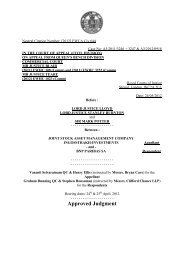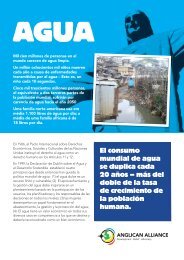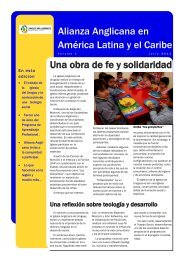Global Learning in Drama and Music - Support
Global Learning in Drama and Music - Support
Global Learning in Drama and Music - Support
You also want an ePaper? Increase the reach of your titles
YUMPU automatically turns print PDFs into web optimized ePapers that Google loves.
<strong>Global</strong> <strong>Learn<strong>in</strong>g</strong> <strong>in</strong> <strong>Drama</strong> <strong>and</strong> <strong>Music</strong>Creative engagementUs<strong>in</strong>g the perform<strong>in</strong>g arts is an excellent way to creatively engagesecondary school students <strong>in</strong> learn<strong>in</strong>g about the wider world, <strong>and</strong> toenrich your lessons. Whether it’s learn<strong>in</strong>g about human rights throughs<strong>in</strong>g<strong>in</strong>g protest songs or us<strong>in</strong>g theatre to explore global citizenshipissues, these opportunities can support students to engage with ourglobal community. Many drama <strong>and</strong> music teachers are alreadyenthus<strong>in</strong>g students about the wider world, <strong>and</strong> we hope that thisactivity kit will enhance this work further, <strong>and</strong> give you some freshideas for the classroom.The ‘Gett<strong>in</strong>g started’ section provides an <strong>in</strong>troductory activity forKS3 students, us<strong>in</strong>g photographs as a stimulus.The ‘Gett<strong>in</strong>g critical’ section explores the use of Forum theatre <strong>and</strong>the Venezuelan 'El Sistima' music programme.The ‘Case study’ section is an example of how Polesworth School <strong>in</strong>Warwickshire has used global learn<strong>in</strong>g <strong>in</strong> KS3 drama.In the curriculum<strong>Support</strong>s the 'National Plan for Education'<strong>Music</strong>: 1.2a, 1.1b, 1.4b<strong>Drama</strong>: (as part of English curriculum):4.1, 4.2, 4.3, 4.4<strong>Global</strong> learn<strong>in</strong>g l<strong>in</strong>ks: MDGs, food <strong>and</strong> water,creative <strong>and</strong> critical th<strong>in</strong>k<strong>in</strong>g, participation,women's rightsGett<strong>in</strong>g started - us<strong>in</strong>g a photoTo get started, this is a simple activity that a KS3 drama or music teacher could do with their class. Us<strong>in</strong>g a photo to <strong>in</strong>spirecreativity <strong>in</strong> the arts subjects is an excellent way to get your students to start engag<strong>in</strong>g with global challenges.1. Ask the students to select one of the photos (on either the theme of 'food' or 'water'). These photos can bedownloaded for free from our resource on the Millennium Development Goals.2. Ask your students –What can you see? What do you th<strong>in</strong>k? In order tostructure the discussion you could ask them to th<strong>in</strong>k about the questionsbelow*a.) The natural aspects – weather, energy, water, liv<strong>in</strong>g th<strong>in</strong>gsb.) The economic aspects –money, trad<strong>in</strong>g, ownership, buy<strong>in</strong>g/sell<strong>in</strong>gc.) The social aspects -people, relationships, traditions, cultures, ways ofliv<strong>in</strong>gd.) The political aspects –power, who decides, who makes choices <strong>and</strong>decisions3. In groups, students write down as many s<strong>in</strong>gle words to describe the photo. They could even create a 'wordle’ torepresent the photo.4. Display the photo <strong>and</strong> the wordle <strong>in</strong> your music or drama classroom to <strong>in</strong>spire creativity.5. In groups, pupils design their own artistic response to the photo <strong>and</strong> wordle. This could <strong>in</strong>volve a short compositiontask <strong>in</strong> music or a freeze frame activity <strong>in</strong> drama.*This approach to us<strong>in</strong>g photos is the Development Compass Rose model. For more support on this see Tide's DevelopmentCompass Rose teach<strong>in</strong>g pack.The photo at the top of the page is Shadow Play by Swamibu on flickr.com <strong>and</strong> used under a Creative Commons licence.
Gett<strong>in</strong>g criticalForum theatre is a technique pioneered by the Brazilian radical Augusto Boal (picturedright). It was orig<strong>in</strong>ally developed as a tool for political change, but is now very popular <strong>in</strong>schools. There is a lot of potential to engage students with global <strong>in</strong>justices, <strong>and</strong> provide aplatform to support discuss<strong>in</strong>g solutions. In Forum theatre, a play or a scene is performedtwice. The scene usually shows some k<strong>in</strong>d or oppression (for example, the mistreatment ofwomen, global poverty, unemployment) In the replay of the scene any member of theaudience can shout ‘stop’ <strong>and</strong> take the place of one of the oppressed characters, show<strong>in</strong>ghow they could change the situation to enable a different outcome. The actors alwaysrema<strong>in</strong> <strong>in</strong> character, improvis<strong>in</strong>g their responses. A facilitator (often called a ‘joker’) isneeded to support the communication between the audience <strong>and</strong> the players. When a solution has been given, the jokeroften <strong>in</strong>vites the audience to discuss the solution. This could be used with KS3 <strong>and</strong> KS4 drama students.Women’s rights through Forum theatreObjective: students are given the opportunity to discuss women’s rights issues through the format of Forum theatre.1) Students get <strong>in</strong> groups of four, <strong>and</strong> choose a women’s rights issue to focus on e.g, violence aga<strong>in</strong>st women, access toeducation, early <strong>and</strong> forced marriage, employment opportunities*2) The brief: students have 15 m<strong>in</strong>utes to design a short ‘family’ scene to highlight one of these issues. The four studentsneed to take on the role of a mother, father, son <strong>and</strong> daughter <strong>in</strong> the play.3) Students perform their work <strong>in</strong> turn, <strong>and</strong> use the format of Forum Theatre to engage with the issues <strong>and</strong> solutions <strong>in</strong>each performance. One member of the class volunteers to be the joker for each group performance.*Useful resources on women’s rights have been written by Amnesty International UK <strong>and</strong> Plan UK NB. It is important thatthe teacher has done basic background read<strong>in</strong>g on these issues <strong>in</strong> order to support the class.Values beh<strong>in</strong>d a music ensembleThe National Plan for <strong>Music</strong> Education emphasises theimportance of ensemble play<strong>in</strong>g. ‘In harmony’ is a social<strong>and</strong> music education programme <strong>in</strong>spired by Venezuela’s‘El Sistima.’ Disadvantaged children are immersed <strong>in</strong>music tuition <strong>and</strong> music-mak<strong>in</strong>g activities. Contrary totraditional music mak<strong>in</strong>g methods, the children do notneed to master their <strong>in</strong>struments before they jo<strong>in</strong> <strong>and</strong>orchestra. They learn together, <strong>and</strong> there is an emphasison community, team work <strong>and</strong> fun. For more <strong>in</strong>formation,see: www.ihse.org.uk/about.The key pr<strong>in</strong>ciples of El Sistima can be seen herewww.ihse.org.uk/pr<strong>in</strong>ciples. L<strong>in</strong>ks to global learn<strong>in</strong>g<strong>in</strong>clude the support for human rights, br<strong>in</strong>g<strong>in</strong>g communitytogether, <strong>and</strong> music as an agent for social change.<strong>Music</strong> activityThis activity will help students reflect on the purpose of theirmusical ensemble <strong>and</strong> how it compares to the values of ElSistima. This would be particularly useful to support all-agemotivation <strong>and</strong> commitment to an extra-curricular musicactivity such as a choir or orchestra.1. Where is Venezuela? What do you th<strong>in</strong>k an orchestraor choir is like <strong>in</strong> Venezuela?2. Students learn about the values of the El Sistimaprogramme. Why do children play together <strong>in</strong> anorchestra as part of Venezuela’s El SistimaProgramme?3. Ask the students to connect the values of El Sistimato their own ensemble. Why do they play together?What’s the purpose?4. Students create their own pr<strong>in</strong>ciples for their musicensemble, <strong>and</strong> display <strong>in</strong> their rehearsal spaceYou may also want to show your students the video diary.'The Little Voice <strong>in</strong> the big Noise Orchestra.' This is a day <strong>in</strong>the life of school pupil, called Morgan. She plays <strong>in</strong> anorchestra based on the model of El Sistima.
The Liverpool World Centre has been work<strong>in</strong>g with 15 Year 9students at St Bede’s, a specialist Arts College <strong>in</strong> Ormskirk.They have been promot<strong>in</strong>g this technique of Forum theatreto engage students with global learn<strong>in</strong>g issues <strong>in</strong> drama lessons.St Bede’s teachers found the child-led <strong>and</strong> peer-to-peer learn<strong>in</strong>gapproach particularly appeal<strong>in</strong>g, <strong>and</strong> they are hop<strong>in</strong>g to useForum theatre more <strong>in</strong> their drama teach<strong>in</strong>g. To f<strong>in</strong>d outmore about the work of Liverpool World Centre, visit:www.liverpoolworldcentre.orgMore ideas…<strong>Music</strong>Oxfam’s <strong>Global</strong> <strong>Music</strong> lesson plansAmnesty International’s ‘The Power of ourVoices’Ukuti Ukuti: Swahili song bookA children’s rights musical<strong>Music</strong> for Change - br<strong>in</strong>g<strong>in</strong>g world music <strong>in</strong> tothe classroom <strong>and</strong> community'World Voice' - a new British Council projectcom<strong>in</strong>g to schools soon<strong>Drama</strong>Rehears<strong>in</strong>g our roles: drama <strong>in</strong> citizenshipeducationCase studyStudents <strong>in</strong> year 7 at The Polesworth School are <strong>in</strong>troduced to<strong>Drama</strong> through look<strong>in</strong>g at their own lives <strong>and</strong> the lives of theircounterparts <strong>in</strong> Ghana. The unit of work teaches some keydramatic concepts <strong>in</strong>clud<strong>in</strong>g: tableaux, exaggeration,synchronisation, use of space, mime, soundscape, devis<strong>in</strong>g <strong>and</strong>transitionFrom Spectators to Spect-actors: a resourceon Forum theatreXchang<strong>in</strong>g the world: role plays <strong>and</strong>simulation games on world tradeCase studiesFormby High School - cultural underst<strong>and</strong><strong>in</strong>gthrough musicStudents are asked to reflect on their own morn<strong>in</strong>g rituals such as Liverpool World Centre - have you heard us?wash<strong>in</strong>g their face, gett<strong>in</strong>g dressed <strong>and</strong> walk<strong>in</strong>g to school - theycreate exaggerated synchronised movement <strong>in</strong> groups <strong>and</strong>perform to a simple beat. They are then presented with an array of photographs of life at our l<strong>in</strong>k school - Pampawie LocalAuthority Junior Secondary School, Ghana. These images are grouped <strong>in</strong>to key themes such as food, water, school, leisuretime <strong>and</strong> shopp<strong>in</strong>g. Students choose a selection <strong>and</strong> create a sequence of tableaux, learn<strong>in</strong>g to move carefully betweenthem. F<strong>in</strong>ally, they utilise the medium of soundscape - imag<strong>in</strong><strong>in</strong>g the sounds at school <strong>in</strong> both countries <strong>and</strong> f<strong>in</strong>d<strong>in</strong>g ways torepresent those sounds; they then apply this technique to mimes that move between the British <strong>and</strong> Ghanaian versions ofthe same activity – for example, from turn<strong>in</strong>g on a tap to operat<strong>in</strong>g a st<strong>and</strong>pipe. They quickly realise that whilst there aresome differences, actually their daily lives are very similar <strong>and</strong> identify that <strong>in</strong> some regards there are no differences at all.Some comments that Polesworth students made:'We both play football – that’s so cool''Really, our days are so alike''I’d really like to pick my food <strong>in</strong>stead of go<strong>in</strong>g to a shop'The global dimension <strong>in</strong> my classroom is brought to you by Th<strong>in</strong>k<strong>Global</strong> www.th<strong>in</strong>k-global.org.uk . We aim to support all teachers tobr<strong>in</strong>g a global dimension to their classroom. Jo<strong>in</strong> thous<strong>and</strong>s of teachers<strong>and</strong> become part of the Th<strong>in</strong>k <strong>Global</strong> Schools Network to receive freeresources <strong>and</strong> up to date <strong>in</strong>formation about tra<strong>in</strong><strong>in</strong>g <strong>and</strong> support.Thanks to Sharon Leftwich-Lloyd from The Polesworth School, <strong>and</strong>Liverpool World Centre, who both contributed to this edition of Theglobal dimension <strong>in</strong> my classroom.Polesworth School Year 7 students


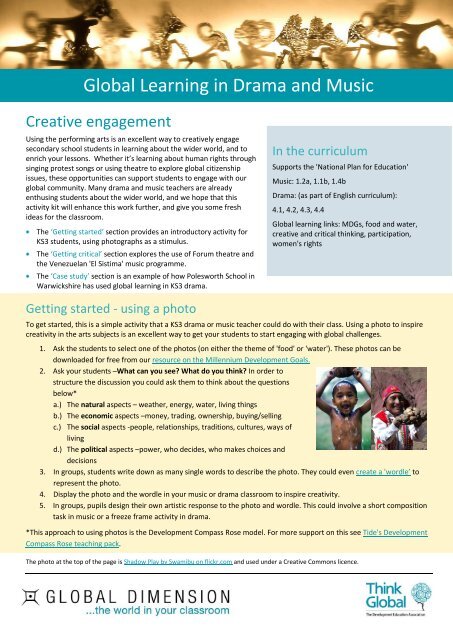

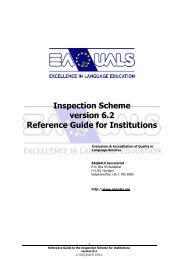
![[2012] UKUT 399 (TCC)](https://img.yumpu.com/51352289/1/184x260/2012-ukut-399-tcc.jpg?quality=85)

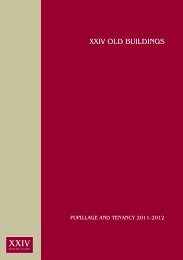
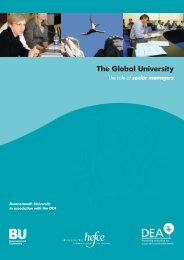
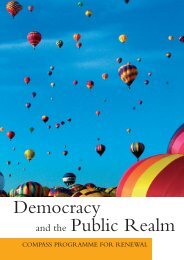
![Neutral Citation Number: [2009] EWHC 3198 (Ch) Case No: CH ...](https://img.yumpu.com/50120201/1/184x260/neutral-citation-number-2009-ewhc-3198-ch-case-no-ch-.jpg?quality=85)
